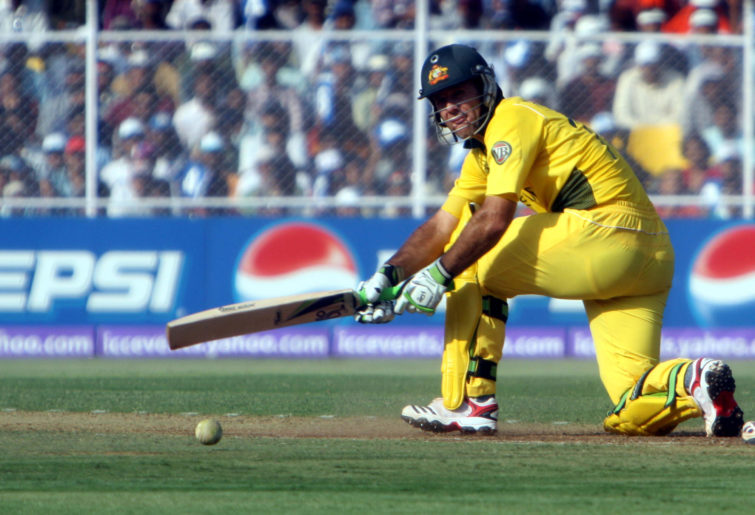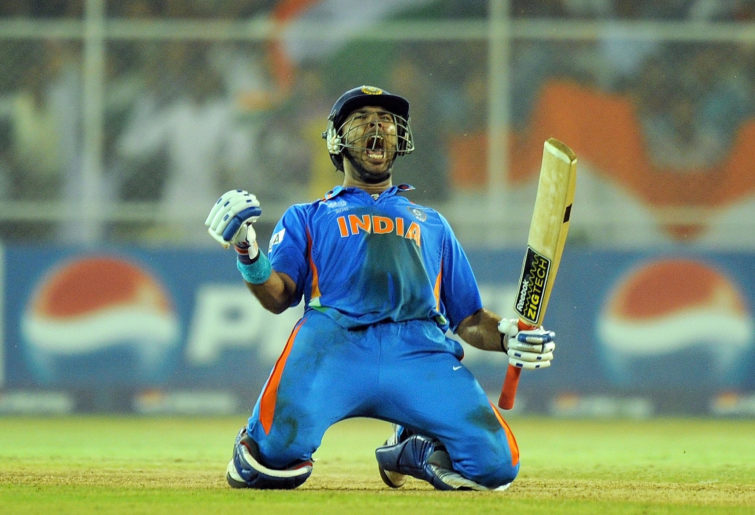WATCH; IPL bowler fuming after getting robbed of near-certain wicket by... Spider-Cam
Harshal Patel was not a happy man!
The Sardar Patel Stadium in Ahmedabad in the state of Gujarat is a venue with a proud history in Indian cricket.
It was at the ground in 1987 against Pakistan that Sunil Gavaskar became the first batsman to surpass 10,000 Test runs.
In 1994, Kapil Dev broke the world Test wicket record, surpassing Richard Hadlee’s career tally of 431. Eleven years earlier he claimed 9-83 in an innings there against West Indies.
In 1999, the ground played host to Sachin Tendulkar’s first Test double century with an innings of 217 against New Zealand.
And, on 24 March 2011, the ground played host to a World Cup quarter-final in which India ended Australia’s tournament.
The game was a clash of the Titans when it came to the one-day game and one that had the cricket mad hosts in a frenzy.
I was lucky enough to be in the commentary box to watch it unfold.
On the day before the match, hundreds of fans made their way to the ground and formed an impromptu honour guard for the Indian team bus as it delivered the squad to a training session.
The following day, the stadium pulsated to the throng of a 54,000-strong crowd.
When the teams filed out on the field for the national anthems, they did so behind massive flags that were being carried onto the ground.
Between the two teams stood the sport’s one-day Holy Grail – the silver trophy glinting in the afternoon sun.
Only one of the two sides later that day would still be in the hunt to hold it aloft come the final.
Australia arrived in Ahmedabad following a loss to Pakistan in the last pool match at Colombo.
It ended a remarkable 34-game World Cup winning streak that spanned a dozen years during which time the Aussies had lifted the trophy at Lord’s, Johannesburg and Bridgetown.
Ricky Ponting won the toss and chose to bat.
The skipper himself had had an underwhelming tournament to that point with just 102 runs from his five innings in the group stage.
For Australia to have a legitimate prospect of winning through to the semi-final it was generally felt he would need to retrieve his form.
He entered the fray at the end of the tenth over upon the demise of Shane Watson for 25. His walk to the middle appeared more purposeful than usual, his gait more accelerated.
That outward appearance indicated a man who was feeling the pressure of the situation, his lean form and the importance of the task ahead. So often he had set the example for his team to follow.
He would once again be locking horns with his nemesis, Harbhajan Singh.
In the Test arena, the bouncy offie had claimed Ponting’s wicket a record ten times, many of them on the dust bowls in India.
Ponting started watchfully, adding 70 with Brad Haddin (53) before the ‘keeper fell to Yuvraj Singh. He continued to blossom with his footwork to the spinners becoming crisper with each over.

(Photo by Nagesh Ohal/India Today Group/Getty Images)
But it was by no means Ponting as his best – his first 50 runs were punctuated with just three boundaries.’
He eventually fell for 104, lobbing a reverse sweep off Ravi Ashwin to Zaheer Khan at short third man, but it was his first international ton in 13 months. The highlight of his 118-ball knock was a cover driven six off Yuvraj.
His celebration upon breaching three figures was muted as if to underline the cut-throat nature of the match.
With the help of a 26-ball unbeaten 38 from David Hussey, Australia reached 6-260 from its 50 overs. It was a highly competitive score on a pitch that was slightly irregular in bounce and taking spin.
Once again, the crowd’s focus fell squarely on the shoulders of Sachin Tendulkar. The roar when he and Virender Sehwag made their way to the middle threatened to lift the roof off the grandstands.
Despite losing his opening partner early, the Little Master looked in total control as he worked his way past fifty. His dismissal came against the flow.
Having been spanked for 23 runs off his first three overs, Shaun Tait got Tendulkar (53) to spar at a ball outside off-stump, providing Haddin with a regulation catch.
Not long after the hosts slumped to 5 for 187 with their future in the tournament balancing on a tight rope.
What followed was a cool-headed, unbroken stand of 74 between India’s talisman Yuvraj Singh (57no) and Suresh Raina (34no). Yuvraj’s innings included a massive six over mid-wicket off a stunned Tait. The knock provided him with his fourth Player of the Match award from seven matches in the tournament.
He brought up victory with a cover-drive to the boundary off Brett Lee.

(AFP PHOTO/MANAN VATSYAYANA)
That shot was a cue for delirium in the stands, a scene no doubt mirrored in lounge rooms across the country. It was akin to knocking the top off a termite mound as the stands literally shook with joy.
India had slain the dragon.
Australia’s quest for a fourth consecutive title laid asunder as India marched through to the final after dispatching arch-rival Pakistan in the semi at Mohali.
In the final at Mumbai, they became the first nation to triumph in a final on home soil, comfortably accounting for Sri Lanka by six wickets.
For Ponting, the loss at Ahmedabad marked the end of his World Cup odyssey having cast a disproportionately long shadow over the sport’s premier white ball tournament.
He left India with numerous World Cup records – most matches (46), most matches as captain (29) and most catches by a fieldsman (28).
Those records still stand heading into this year’s tournament in England.
Only Tendulkar has bettered his aggregate of 1743 runs (scored at an average of 45.9) and his five centuries.
Along with teammates Glenn McGrath and Adam Gilchrist he holds the record of being involved in three successful World Cup campaigns.
When the dust had settled on the match and the media conference was concluded I interviewed Ponting behind the sightscreen at the member’s end.
Some Indian fans were still in the stands, leaning over the railing shouting their platitudes at one of the game’s greatest. He looked like a knight who had been worn down by conflict. It prompted me to ask whether he would consider resigning the captaincy.
He response was a firm “no”.
The flight home must have swayed his mind, however, as five days later he stood aside.
As a footnote, the stadium that hosted that match and those other seminal moments in Indian cricket history is no longer.
It was demolished in October 2015 with the site currently construction zone for what will be the largest cricket venue in the world with a new 110,000-capacity mega-stadium heading towards completion.
It will stand not far from the world’s tallest statue, a 180m colossus of Indian activist and statesman, Sardar Patel whose name was honoured on the previous stadium.
Go in the draw to win $2K by joining The Roar‘s 2019 Cricket World Cup tipping comp by submitting your tips below!